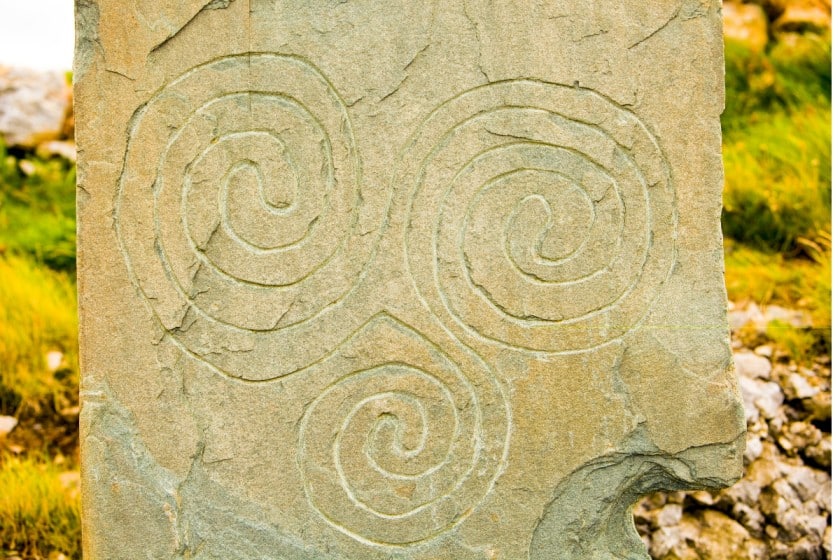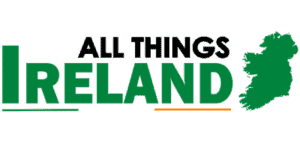Irish Leprechaun Folklore History

Hello there, in this post I’m going to be talking about the history of the Leprechauns. I like Irish history and I’m interested in Irish history and folklore.
A Leprechaun is a type of fairy as known as the little people. Leprechauns are all over Irish folklore they are typically displayed in Irish storytelling as a little bearded man wearing green coats and hats who partakes in mischief. In these stories, they are portrayed as solitary creatures who spend their time making and mending shoes and have pots of gold at the ends of rainbows if captured.
If you capture one of the little people they tend to offer you three wishes in exchange for their freedom. The first time the Leprechaun appears in Irish folklore is in the medieval tale of Echtra Fergus mac Léti (Adventure of Fergus son of Léti). This adventure of Fergus Son of Leti (King of Ulster) the story contains a section in which is woken up on a beach being dragged into the sea by three Leprechauns.
I thought this is interesting I thought about this before I wrote this post. Three is a very powerful number in Celtic history and culture for many different reasons.
I find it’s appropriate in terms of addressing the Leprechaun if you look at Irish Triskelion and you look at Saint Patrick who came to Ireland and changed pagan belief into Christianity using the Shamrock. Saint Patrick used the three-leaved clover and he did this by comparing the three leaves on a clover to the Holy Cross, the Trinity the Holy Trinity, the Father and Son and the Holy Spirit.
See my post here on Celtic Symbols of Ireland Explained!
The Power of Three

Saint Patrick was able to convince them of the power of three because they believed so much in nature in the revitalization of nature. The Shamrock was really powerful in that sense so I think that’s kinda interesting looking at the 3’s because there’s even another example of how three is used, and how it came so in the story we’re talking about the three leprechauns of mischief pulling him into the sea.
He then captures the three little people who grant him three wishes again this number three comes up and is a very popular number in Irish and Celtic history and culture.
So, I just wanted to bring that point home that these assertions you know about the little people. You know that giving the three wishes and having a pot of gold are modernized and evolved perspectives of the trickster creature earlier in Irish history.
Although if we look at ancient Ireland we see certainly the predominant myth of the little people addressed as a spiritual fairy entity who domiciles in fairy forts and fairy reigns. Ever heard of the term “Luck of the Irish” or the inherent belief in finding gold at the end of the rainbow well the spiritual entities that were told in these earlier stories are perceived as essentially by Celtic Gods.
Old Tales

Tradition and so this word luck or the luck of the Irish really came from these mythological fairy creatures who eventually evolved into what we know as the modernized Leprechaun.
Another perspective of the little people is dated back to around the twelve to fifteen centuries when they were displayed in old Irish manuscripts as spiritual entities that were mentioned as male and female leprechauns and lived underwater.
Leprechaun Tricks

The manuscript describes these entities as ferocious warriors and even goes so far as to illustrate the females being tricksters themselves and luring human men for adventure. There are certainly elements of maybe influence with mermaids and sea creatures that I think it emanates from this mythological fairy creature that lives in the sea.
But don’t quote me on that but I get that feeling that the mermaid tales of the underwater creatures in the ocean are certainly tricksters by tricking and luring human men.
The little people’s trickery is similar to that of a mermaid to me and this example seems to collaborate with the background and modern folklore that you know. Leprechauns are tricksters you know this that was a beginning element to this trickster kind of aspect in the leprechaun you know in history.
So, I hope you’ve learned something about Leprechauns today I definitely hope you don’t meet any bad Leprechauns while travelling to Ireland.
I think there is a massive interest in Leprechauns and Celtic history and I’d like to get your feedback on these matters. Please send me an email at the email address below.
See my post here on What in the Irish Breakfast?
I hope you find this post useful, I welcome any questions or suggestions by email to info@allthings-ireland.com.
Thanks
John C
All Things Ireland.
Recent Posts
Unraveling the Enigma: Exploring the History and Symbolism of Celtic Knots
The Origins of Celtic KnotsThe intricate artistry of Celtic knots holds a rich history that dates back centuries to the Celtic tribes of ancient times. These ancient peoples, with their strong...
Researching Budget-Friendly Accommodation OptionsWhen planning a budget-friendly trip, one of the key aspects to consider is finding affordable accommodation. Start your search by exploring options...
